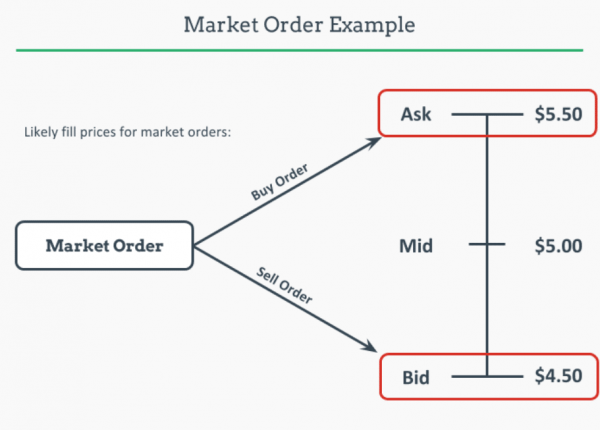
You can purchase fractional shares from stocks through various online brokerages like TD Ameritrade. M1 Finance. and E-Trade. Here's why fractional shares are an excellent way to diversify your portfolio. Many people don't have the time or funds to create a diverse portfolio. Fractional stock options are a great way of buying hot stocks you might not otherwise be able to. There are many things to remember before buying fractional shares.
M1 Finance
M1 Finance, a brand new platform for digital wealth management, allows investors the ability to invest in fractional shares (or small shares) of companies. They can now invest small amounts, like $100, without having to keep their cash sitting idle. This feature is particularly helpful for younger investors, as they might not have the capital necessary to buy entire shares of a company. Additionally, M1 Finance offers a number of other features, such as investing in ETFs or mutual funds to diversify their portfolio.

M1 Finance charges low fees and does not charge investors any commission. It generates revenue by lending securities. There are no short sales, margin loans, or other fees. It does not charge investors any fees for its services. This can easily add up over the course to thousands of dollars. It accepts joint and individual taxable accounts, traditional Roth IRAs, SEP IRAs, and trusts.
TD Ameritrade
TD Ameritrade, one of the most popular online brokerages, is among them. This firm offers a variety of features, including investing in a wide variety of stocks and funds. You can also create and track your portfolios. TD Ameritrade won't automatically withdraw cash from an account into a money-market fund. But clients can choose to be included in this service. TD Ameritrade's innovations are geared towards improving client experience. The platforms are simple to use, and have an innovative design that places the client experience at the forefront. For example, thinkorswim and TD Ameritrade mobile apps are highly customizable.
TD Ameritrade's feature does not allow you to purchase fractional shares. However, it does allow you to reinvest dividends in fractional shares. Unlike many brokers, TD Ameritrade also allows clients to reinvest dividends from stocks, ETFs, and mutual funds. Online reinvestment preferences can be set up. You can also make any changes at any time if necessary.
E-Trade
A fractional share is a way to invest in stock. These types of investments work well for new investors. These shares allow you to make small investments without worrying about spending thousands of dollars on one share. Because fractional shares can be purchased at a lower price than whole shares it is easy to use the dollar-cost average technique. And, many online brokers offer fractional share buying.

Be careful when selling and buying fractional shares. There are many other options when it comes to buying fractional shares. Robinhood is one option. This company offers fractional shares for a reasonable price. Robinhood lets you buy fractional share for as low as 0.000001 a share. The fractional shares will be automatically added to the portfolio once the transaction has been completed.
FAQ
How do you invest in the stock exchange?
Brokers can help you sell or buy securities. Brokers buy and sell securities for you. When you trade securities, brokerage commissions are paid.
Banks are more likely to charge brokers higher fees than brokers. Because they don't make money selling securities, banks often offer higher rates.
To invest in stocks, an account must be opened at a bank/broker.
If you use a broker, he will tell you how much it costs to buy or sell securities. This fee will be calculated based on the transaction size.
You should ask your broker about:
-
Minimum amount required to open a trading account
-
If you close your position prior to expiration, are there additional charges?
-
What happens if your loss exceeds $5,000 in one day?
-
How long can positions be held without tax?
-
How you can borrow against a portfolio
-
Whether you are able to transfer funds between accounts
-
How long it takes to settle transactions
-
The best way for you to buy or trade securities
-
How to Avoid Fraud
-
How to get assistance if you are in need
-
If you are able to stop trading at any moment
-
If you must report trades directly to the government
-
whether you need to file reports with the SEC
-
What records are required for transactions
-
Whether you are required by the SEC to register
-
What is registration?
-
How does it affect me?
-
Who should be registered?
-
When should I register?
What is a REIT?
An entity called a real estate investment trust (REIT), is one that holds income-producing properties like apartment buildings, shopping centers and office buildings. They are publicly traded companies which pay dividends to shareholders rather than corporate taxes.
They are similar to a corporation, except that they only own property rather than manufacturing goods.
How can people lose money in the stock market?
The stock market is not a place where you make money by buying low and selling high. You can lose money buying high and selling low.
The stock exchange is a great place to invest if you are open to taking on risks. They may buy stocks at lower prices than they actually are and sell them at higher levels.
They believe they will gain from the market's volatility. But they need to be careful or they may lose all their investment.
What is security?
Security is an asset that generates income for its owner. Most common security type is shares in companies.
There are many types of securities that a company can issue, such as common stocks, preferred stocks and bonds.
The earnings per share (EPS), as well as the dividends that the company pays, determine the share's value.
If you purchase shares, you become a shareholder in the business. You also have a right to future profits. If the company pays you a dividend, it will pay you money.
You can always sell your shares.
Statistics
- The S&P 500 has grown about 10.5% per year since its establishment in the 1920s. (investopedia.com)
- For instance, an individual or entity that owns 100,000 shares of a company with one million outstanding shares would have a 10% ownership stake. (investopedia.com)
- Ratchet down that 10% if you don't yet have a healthy emergency fund and 10% to 15% of your income funneled into a retirement savings account. (nerdwallet.com)
- Even if you find talent for trading stocks, allocating more than 10% of your portfolio to an individual stock can expose your savings to too much volatility. (nerdwallet.com)
External Links
How To
How to open and manage a trading account
Opening a brokerage account is the first step. There are many brokers that provide different services. There are many brokers that charge fees and others that don't. Etrade is the most well-known brokerage.
Once your account has been opened, you will need to choose which type of account to open. You can choose from these options:
-
Individual Retirement Accounts (IRAs).
-
Roth Individual Retirement Accounts
-
401(k)s
-
403(b)s
-
SIMPLE IRAs
-
SEP IRAs
-
SIMPLE SIMPLE401(k)s
Each option offers different advantages. IRA accounts offer tax advantages, but they require more paperwork than the other options. Roth IRAs give investors the ability to deduct contributions from taxable income, but they cannot be used for withdrawals. SIMPLE IRAs have SEP IRAs. However, they can also be funded by employer matching dollars. SIMPLE IRAs can be set up in minutes. They enable employees to contribute before taxes and allow employers to match their contributions.
The final step is to decide how much money you wish to invest. This is known as your initial deposit. Most brokers will offer you a range deposit options based on your return expectations. For example, you may be offered $5,000-$10,000 depending on your desired rate of return. This range includes a conservative approach and a risky one.
After you've decided which type of account you want you will need to choose how much money to invest. You must invest a minimum amount with each broker. These minimum amounts can vary from broker to broker, so make sure you check with each one.
After choosing the type account that suits your needs and the amount you are willing to invest, you can choose a broker. Before you choose a broker, consider the following:
-
Fees – Make sure the fee structure is clear and affordable. Many brokers will offer trades for free or rebates in order to hide their fees. However, many brokers increase their fees after your first trade. Do not fall for any broker who promises extra fees.
-
Customer service - Find customer service representatives who have a good knowledge of their products and are able to quickly answer any questions.
-
Security - Look for a broker who offers security features like multi-signature technology or two-factor authentication.
-
Mobile apps – Check to see if the broker provides mobile apps that enable you to access your portfolio wherever you are using your smartphone.
-
Social media presence. Find out whether the broker has a strong social media presence. It may be time to move on if they don’t.
-
Technology – Does the broker use cutting edge technology? Is the trading platform easy to use? Is there any difficulty using the trading platform?
Once you have selected a broker to work with, you need an account. While some brokers offer free trial, others will charge a small fee. After signing up, you'll need to confirm your email address, phone number, and password. You will then be asked to enter personal information, such as your name and date of birth. The last step is to provide proof of identification in order to confirm your identity.
Once verified, your new brokerage firm will begin sending you emails. It's important to read these emails carefully because they contain important information about your account. You'll find information about which assets you can purchase and sell, as well as the types of transactions and fees. You should also keep track of any special promotions sent out by your broker. These could include referral bonuses, contests, or even free trades!
Next, open an online account. An online account can be opened through TradeStation or Interactive Brokers. Both of these websites are great for beginners. You'll need to fill out your name, address, phone number and email address when opening an account. After this information has been submitted, you will be given an activation number. You can use this code to log on to your account, and complete the process.
Now that you have an account, you can begin investing.